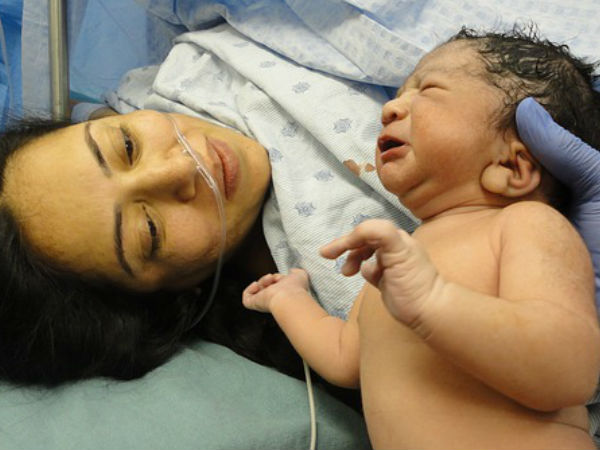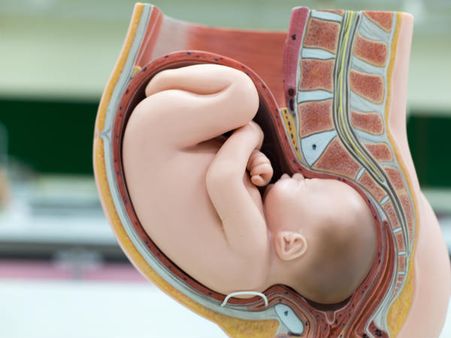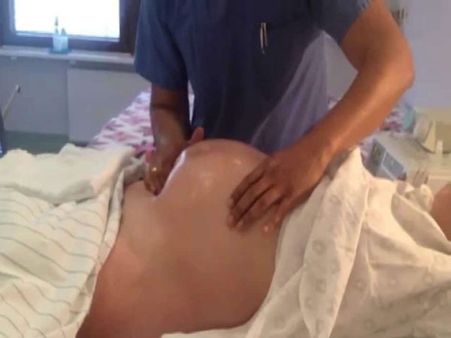Just In
- 2 hrs ago

- 2 hrs ago

- 6 hrs ago

- 13 hrs ago

Don't Miss
- Sports
 Who Won Yesterday's IPL Match 34? LSG vs CSK, IPL 2024 on April 19: KL Rahul Stellar Batting Show Decimate Chennai Bowling
Who Won Yesterday's IPL Match 34? LSG vs CSK, IPL 2024 on April 19: KL Rahul Stellar Batting Show Decimate Chennai Bowling - Finance
 Rs 17/Share Dividend: Record Date On April 26; Buy The ICICI Group Stock To Be Eligible?
Rs 17/Share Dividend: Record Date On April 26; Buy The ICICI Group Stock To Be Eligible? - Movies
 Chief Detective 1958 Episode 2 OTT Release Date, Time, Platform: When & Where To Watch? What To Expect? DEETS
Chief Detective 1958 Episode 2 OTT Release Date, Time, Platform: When & Where To Watch? What To Expect? DEETS - News
 Chinese President Xi Jinping Orders Biggest Military Reorganisation Since 2015
Chinese President Xi Jinping Orders Biggest Military Reorganisation Since 2015 - Education
 Exam Pressure Does Not Exist; Studying Punctually is Crucial; Says Aditi, the PSEB 2024 Topper
Exam Pressure Does Not Exist; Studying Punctually is Crucial; Says Aditi, the PSEB 2024 Topper - Automobiles
 Suzuki Swift Hatchback Scores 4 Star Safety Rating At JNCAP – ADAS, New Engine & More
Suzuki Swift Hatchback Scores 4 Star Safety Rating At JNCAP – ADAS, New Engine & More - Technology
 Dell Introduces AI-Powered Laptops and Mobile Workstations for Enterprises in India
Dell Introduces AI-Powered Laptops and Mobile Workstations for Enterprises in India - Travel
 Journey From Delhi To Ooty: Top Transport Options And Attractions
Journey From Delhi To Ooty: Top Transport Options And Attractions
What Is External Cephalic Version? How Is It Done?
Most babies are born in a head-first position. Babies, who usually move about, turn and make all kinds of motions in the womb, calm down and take up a head-down position by the 36th week. This is an important precursor to the labour and delivery.
But sometimes, a baby fails to assume the head-down position which is most favorable for a natural birth. If such cases go unnoticed and untreated, it may lead to complicated births and may even need a Caesarean section for the delivery.

Fortunately, there are ways in which the baby can safely be turned to help it get into a head-first position. One of these methods is known as External Cephalic Version (ECV). In this method, the baby is 'nudged' into position by the doctor manually.
Today, we shall take a look at what ECV is. We shall also go on to consider the risks involved. Read on to know more.

What Is ECV?
There are many babies that may still be in a ‘breech position' by the time they are in their 36th week of pregnancy. Such babies are in a position which will have either their feet or their bottoms come out first if they go on to have a vaginal birth. This will make the birth difficult and complicated.
If breech cases are found out early enough and the pregnancy is not considered high risk, the doctors may suggest ECV. In this procedure, the doctors will use gentle pressure on the abdomen to make the baby get into the correct position for birth.

What Should You Expect During The Procedure?
This procedure is very safe and is not invasive. Firstly, the baby will be monitored and his heartbeat will be constantly watched for signs of distress. The CTG or the cardiotocograph will be used for this. The baby will be monitored for half an hour before the procedure even begins. You may be administered some medicines that will help the uterine muscles relax. This won't harm you or the baby.
Next, the doctor will place his hands on the surface of your stomach. With gentle pressure, the doctor will try to turn your baby or coax him into turning into the correct position. Once the doctor is assured that the baby is correctly positioned, he will use the ultrasound to check and make sure. The ultrasound can also be used by your doctor to guide him while performing the procedure.

Is The Procedure Painful?
If you are given a drug to relax your uterus muscles, you may feel a slight discomfort. The pressure applied by the doctor on the abdomen may also feel uncomfortable. As the pain threshold for each person differs, you may expect anything from a slight discomfort to a slight pain during the procedure.

What Are The Risks Of Going Through ECV?
There are many things you should consider when deciding whether or not to undergo an ECV.
•
You
should
not
go
for
ECV
if
you
are
carrying
twins
or
multiples.
•
You
should
not
choose
ECV
if
you
are
going
to
get
a
cesarean
section
due
to
medical
reasons
anyway.
•
If
you
have
a
womb
that
is
heart-shaped
or
is
a
bicornuate
uterus,
you
should
not
go
for
ECV
as
it
has
fewer
chances
of
success.
A
pear-shaped
womb
is
most
suited
for
this
procedure.
•
If
you
have
vaginal
bleeding
in
a
week
before
the
procedure
do
not
go
for
ECV.
•
If
your
baby's
heartbeat
seems
abnormal,
do
not
go
for
ECV.
•
If
you
or
your
baby
has
health
conditions
that
may
be
a
deterrent
to
the
procedure,
do
not
choose
ECV.
•
If
your
water
has
already
broken
do
not
undergo
ECV.

How Safe Is The Procedure?
ECV is very safe in most cases. But in some cases, it has been seen that the baby's heart rate changes during the procedure. Other complications you may need to be prepared for are the detachment or tearing of the placenta and preterm birth.
In most hospitals, the procedure is done in controlled conditions which facilitate an emergency Caesarean section if the need arises.
When you get back home after the procedure, look out for bleeding, abnormal contractions and a lack of movement in your baby. If any of these things are noticed, contact your doctor immediately.

What Is The Success Rate Of The ECV Procedure?
More than 50 per cent of the babies that undergo the ECV go on to have normal and healthy vaginal deliveries. But less than half of the babies may also go back into a breech position. This is because the babies will continue to move in the womb even after the procedure is done.

What Can Be Done If The ECV Was A Failure?
Most ECV procedures get the babies into the right position. But if the procedure failed and the baby does not turn in the first attempt, your doctor may want to try again in another week. Most babies stay in position once turned as they are big and have very less space to move around. But sometimes the babies flip into a breech position after the procedure.
You may choose not to go for a second attempt as the baby may flip into the correct position when the birth comes near. If it does not happen, a vaginal birth may still be possible or you may even choose a Caesarean section.
-
 healthSolar Eclipse 2024: Dos and Don'ts for Pregnant Women During Surya Grahan
healthSolar Eclipse 2024: Dos and Don'ts for Pregnant Women During Surya Grahan -
 healthLunar Eclipse 2024: Dos And Don'ts For Pregnant Woman During Chandra Grahan
healthLunar Eclipse 2024: Dos And Don'ts For Pregnant Woman During Chandra Grahan -
 fashionDeepika Padukone-Ranveer Singh Announce Pregnancy: 6 Maternity Outfit Ideas For The Modern Mom-to-Be
fashionDeepika Padukone-Ranveer Singh Announce Pregnancy: 6 Maternity Outfit Ideas For The Modern Mom-to-Be -
 healthLate Singer Sidhu Moose Wala's Mother Is Pregnant Through IVF, Know What It Is And How To Prepare For It
healthLate Singer Sidhu Moose Wala's Mother Is Pregnant Through IVF, Know What It Is And How To Prepare For It -
 insyncVirat Kohli And Anushka Sharma Name Their Baby Boy 'Akaay', Know What This Beautiful Name Means?
insyncVirat Kohli And Anushka Sharma Name Their Baby Boy 'Akaay', Know What This Beautiful Name Means? -
 pregnancy parentingMaternal Health Awareness Day 2024: 15 Foods That Boost Maternal Health
pregnancy parentingMaternal Health Awareness Day 2024: 15 Foods That Boost Maternal Health -
 pregnancy parentingFrom Contractions To Water Breaking: Knowing When It's Time For The Hospital During Pregnancy
pregnancy parentingFrom Contractions To Water Breaking: Knowing When It's Time For The Hospital During Pregnancy -
 pregnancy parentingBirth Control Pills Can Affect This Primary Function In Women: Find Out What
pregnancy parentingBirth Control Pills Can Affect This Primary Function In Women: Find Out What -
 pregnancy parentingTwo Wombs, Four Hearts: US Mom's Extraordinary Double Uterus Pregnancy
pregnancy parentingTwo Wombs, Four Hearts: US Mom's Extraordinary Double Uterus Pregnancy -
 healthExclusive: A Pregnant Mom Can Posses These Maternal, Fetal Health Risks If Exposed To Air Pollution
healthExclusive: A Pregnant Mom Can Posses These Maternal, Fetal Health Risks If Exposed To Air Pollution -
 pregnancy parentingDelhi Air Pollution: Pregnant Women Must Follow These 4 Things!
pregnancy parentingDelhi Air Pollution: Pregnant Women Must Follow These 4 Things! -
 pregnancy parentingDelhi Air Quality Crisis: How Air Pollution Can Affect Unborn And Newborn Babies? Precaution Tips For Pregnant
pregnancy parentingDelhi Air Quality Crisis: How Air Pollution Can Affect Unborn And Newborn Babies? Precaution Tips For Pregnant


 Click it and Unblock the Notifications
Click it and Unblock the Notifications



